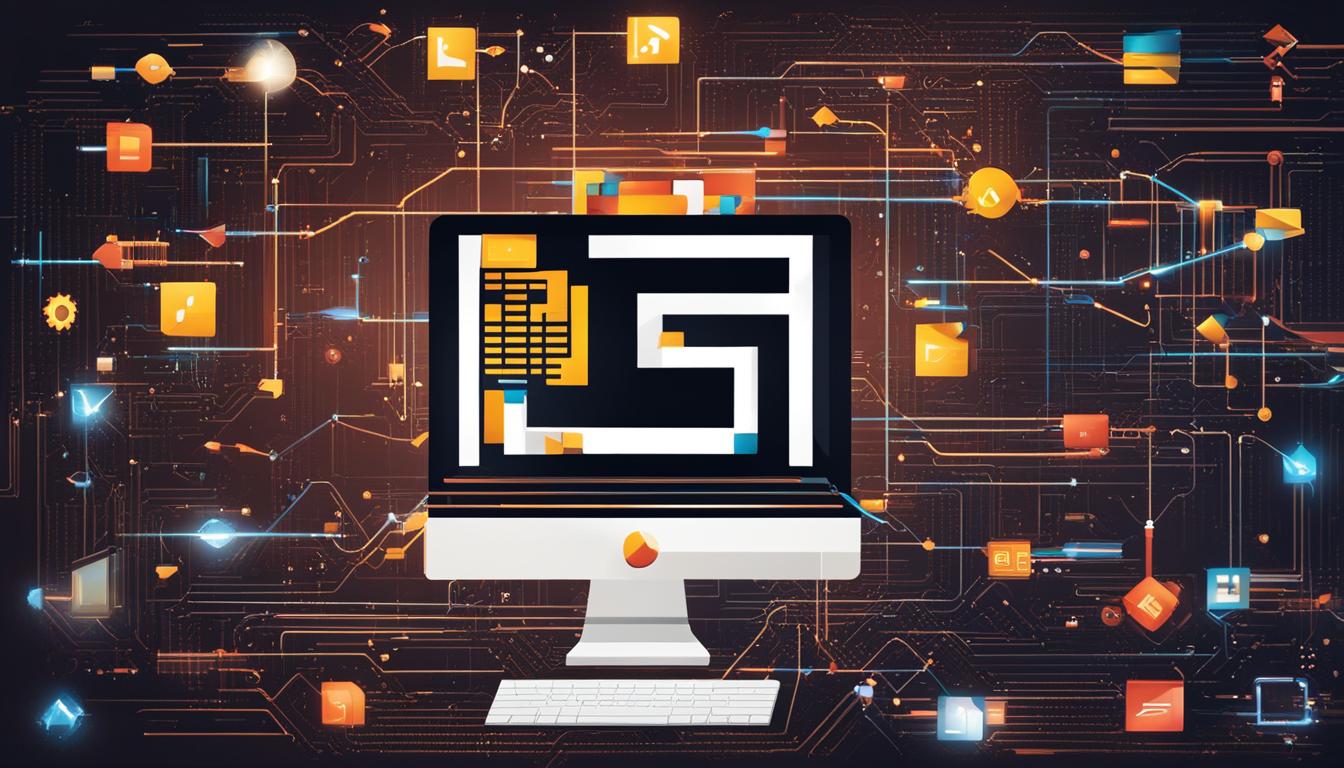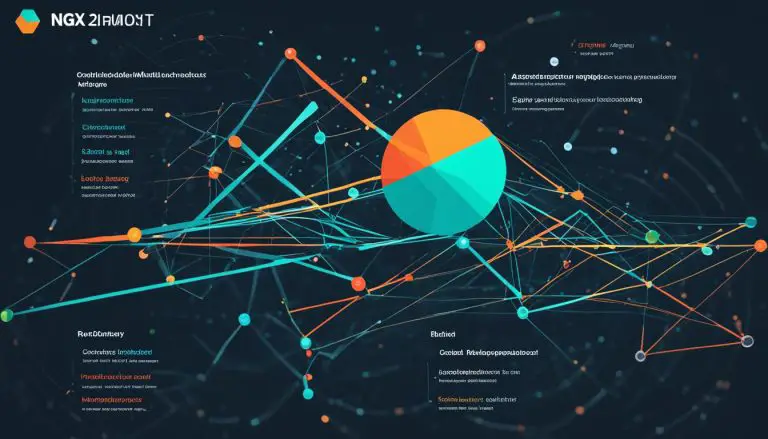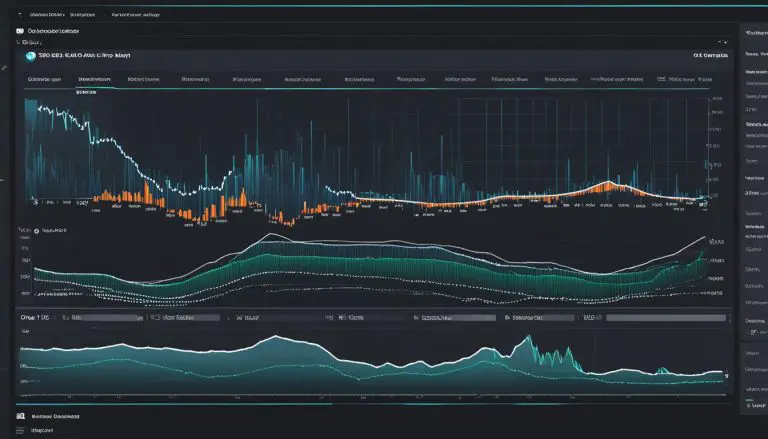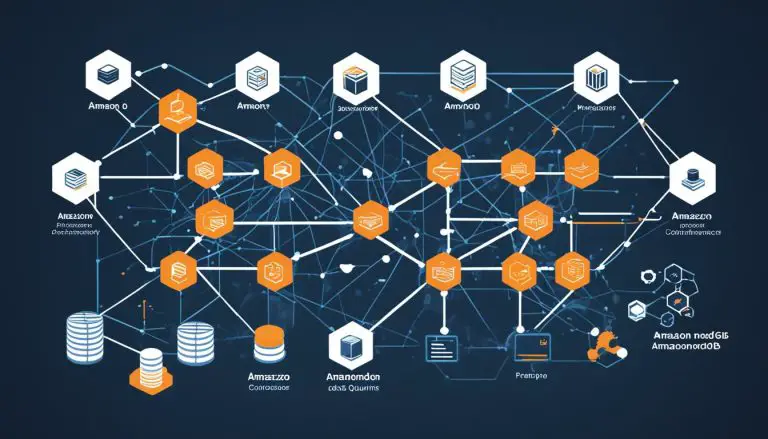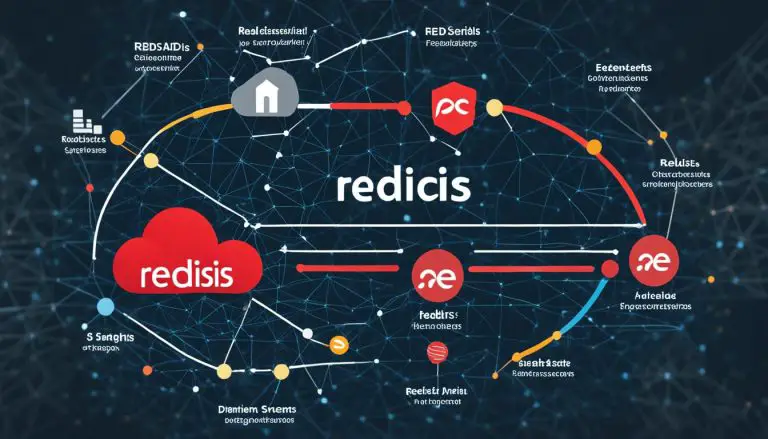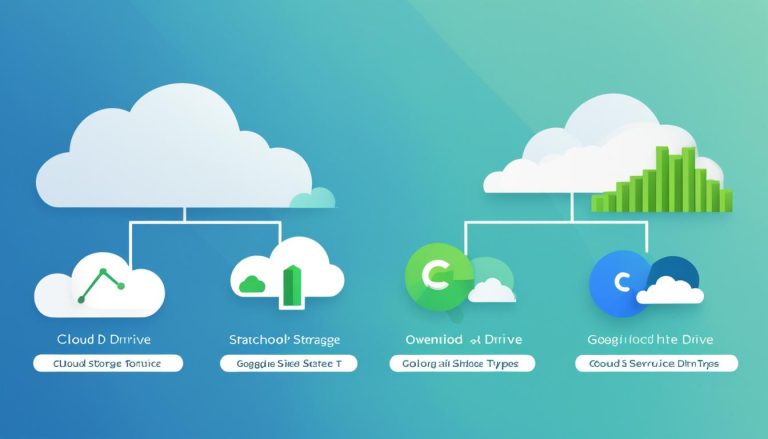Understanding What is JavaScript: A Guide
JavaScript is an essential programming language that adds interactivity and dynamic functionality to websites. As a web developer, I have come to appreciate the immense power and versatility of JavaScript in creating engaging user experiences. In this guide, I will provide a comprehensive overview of JavaScript, exploring its definition, features, and applications.
So, what is JavaScript exactly? Put simply, JavaScript is a lightweight, dynamic, and object-oriented programming language that enables developers like me to bring websites to life. It allows for dynamic styling, animations, and behavior responses based on user interactions. With JavaScript, I can create games, 2D and 3D graphics, database-driven apps, and much more.
JavaScript is not only beginner-friendly but also widely used in modern web development. It serves as an integral part of the web development landscape, with a vast and supportive community. Moreover, JavaScript boasts an extensive ecosystem of libraries and frameworks that enhance productivity and facilitate the creation of complex web applications.
Key Takeaways:
- JavaScript is a versatile programming language used for adding interactivity to websites.
- It enables dynamic styling, animations, and behavior responses to user actions.
- JavaScript is beginner-friendly and widely used in modern web development.
- It can be used to create games, graphics, database-driven apps, and more.
- JavaScript has a large community and an extensive ecosystem of libraries and frameworks.
JavaScript Basics and Syntax
In this section, we’ll explore the basics of JavaScript and its syntax. Understanding these fundamental concepts is essential for anyone starting their journey in JavaScript development. Let’s dive in!
Variables and Data Types
JavaScript uses variables to store values. It has dynamic typing, which means that variables can hold different data types. Some of the commonly used data types in JavaScript are:
- Strings: Represents textual data and is enclosed in single or double quotes.
- Numbers: Represents numeric values, such as integers and floating-point numbers.
- Booleans: Represents either
1true
or
1falsevalues, used for logical operations.
- Arrays: Allows the storage of multiple values in a single variable.
- Objects: Represents a collection of properties and values.
Programming Paradigms in JavaScript
JavaScript supports both object-oriented programming (OOP) and functional programming (FP) paradigms. This flexibility allows developers to choose the approach that best fits their project’s needs. OOP in JavaScript involves creating objects and organizing code based on objects and their interactions. FP focuses on the use of pure functions and immutable data.
Platform-Independent Language
One of the strengths of JavaScript is its platform independence. It can be executed on any browser or operating system without the need for any modifications. This cross-platform compatibility makes JavaScript a versatile language for web development.
Interpreted Language and Line-by-Line Execution
JavaScript is an interpreted language, meaning that it doesn’t require compilation before execution. It runs line by line, executing each statement one after another. This allows developers to quickly test and iterate their code.
Operators and Conditionals
JavaScript provides a rich set of operators for mathematical calculations and comparisons. These operators include arithmetic, logical, and comparison operators. Additionally, JavaScript supports conditionals such as
1 | if...else |
statements, enabling developers to execute code based on certain conditions.
Adding Comments and Explaining Code
Comments are an essential part of any programming language, including JavaScript. They allow developers to add explanations or documentation within the code itself. In JavaScript, you can add single-line comments using
1 | // |
or multi-line comments using
1 | /* */ |
.
Built-in Methods and Libraries
JavaScript provides a wide range of built-in methods and libraries to simplify common programming tasks. These methods and libraries cover various functionalities, such as manipulating strings and numbers, interacting with the DOM (Document Object Model), and performing AJAX requests for data retrieval.
Now that we’ve covered the basics of JavaScript syntax and concepts, let’s move on to exploring its features and practical applications in the next section.
JavaScript Features and Applications
JavaScript is a versatile programming language that offers a wide range of features and applications. By mastering JavaScript, you can create dynamic web content, including interactive forms, animations, and multimedia.
One of the key capabilities of JavaScript is its ability to manipulate the DOM (Document Object Model) and modify HTML and CSS elements on a web page. This allows you to dynamically update and change the appearance and content of your website based on user interactions.
JavaScript also provides a variety of APIs (Application Programming Interfaces) that enable advanced functionalities. For example, the Geolocation API allows you to retrieve geographical information, while the Canvas API enables you to create stunning 2D and 3D graphics.
In addition to manipulating elements and using APIs, JavaScript is great for handling events. You can write code that responds to user actions like mouse clicks, form submissions, and key presses. This makes your website more interactive and engaging.
Another important feature of JavaScript is its support for asynchronous processing through promises. This allows for non-blocking operations, ensuring that your web application remains responsive even when executing time-consuming tasks.
Furthermore, JavaScript can interact with third-party APIs, such as Twitter and Google Maps, to incorporate external functionalities into your website. This opens up a world of possibilities for creating rich and interactive web experiences.
To illustrate the power of JavaScript, here are a few examples:
- Creating a live search feature that updates search results as the user types
- Building a slideshow with smooth transition effects
- Implementing form validation to ensure user input meets specific criteria
- Developing a real-time chat application using WebSockets
Learning JavaScript opens up endless opportunities for creativity, innovation, and problem-solving in web development. By harnessing the features and applications of JavaScript, you can create dynamic and interactive websites that provide a great user experience.
| JavaScript Features | Applications |
|---|---|
| DOM Manipulation | Modify HTML and CSS elements on web pages |
| APIs | Retrieve geographical information, create 2D/3D graphics, and more |
| Event Handling | Execute code based on user actions like mouse clicks and form submissions |
| Asynchronous Processing | Perform non-blocking operations with promises |
| Integration with Third-Party APIs | Incorporate external functionalities into websites |
Key Takeaways:
- JavaScript offers a wide range of features and applications for web development.
- It allows for DOM manipulation, advanced functionalities through APIs, event handling, asynchronous processing, and integration with third-party APIs.
- By learning JavaScript, you can create dynamic and interactive web experiences.
Now that you’ve explored the features and applications of JavaScript, it’s time to dive deeper into its syntax and explore more advanced concepts. In the next section, we’ll cover JavaScript functions and explore their role in creating modular and reusable code.
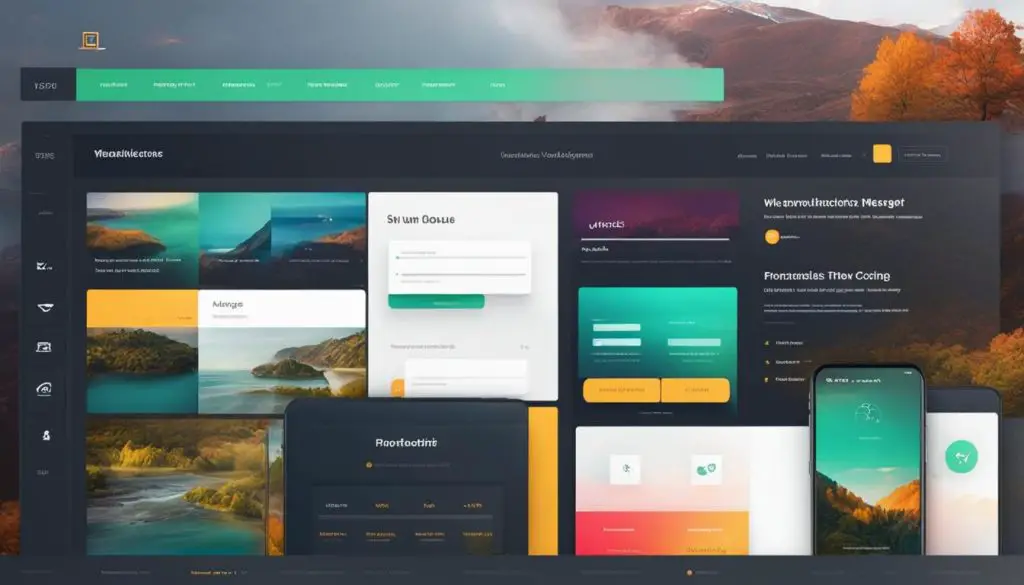
JavaScript Glossary
In order to better understand JavaScript, it is important to familiarize yourself with some key terms and concepts. This glossary will provide you with a basic understanding of the terminology used in JavaScript programming.
Methods
Methods in JavaScript are actions that can be performed on objects. They allow you to perform specific tasks or operations on data. For example, if you have an array, you can use the push() method to add an element to the end of the array.
Libraries
Libraries are ready-made sets of code that are designed to accomplish specific tasks. They provide predefined functions and modules that you can use in your JavaScript code. Libraries save you time and effort by allowing you to leverage existing code rather than writing everything from scratch. Examples of popular JavaScript libraries include jQuery and React.
Numbers
In JavaScript, numbers are a fundamental data type. They can be integers (whole numbers) or floating-point values (decimal numbers). JavaScript supports various mathematical operations, such as addition, subtraction, multiplication, and division, which you can perform on numbers.
Booleans
Booleans are a data type that can have one of two values: true or false. They are often used for conditional logic and comparisons. For example, you can use a boolean variable to check if a certain condition is true or false.
DOM (Document Object Model) API
The DOM API is a programming interface used to interact with HTML and CSS elements on a web page. It enables you to dynamically manipulate the content, structure, and styling of a webpage using JavaScript. With the DOM API, you can add, remove, or modify HTML elements and CSS properties.
APIs
APIs, or Application Programming Interfaces, are sets of rules and protocols that allow different software applications to communicate with each other. In the context of JavaScript, APIs provide additional functionality and access to resources beyond what is available in the core language. They enable you to interact with external services and resources, such as retrieving data from a server or integrating with third-party platforms.
By familiarizing yourself with these key terms, you’ll have a solid foundation in the JavaScript glossary, making it easier for you to navigate and understand the language as you delve further into your programming journey.
Conclusion
JavaScript is a powerful and versatile programming language that is essential for modern web development. With its ability to enable dynamic and interactive web experiences, JavaScript offers a wide range of features and functionalities.
One of the key strengths of JavaScript is its widespread usage and large community of developers. By learning JavaScript, individuals can acquire the skills necessary to create dynamic websites, interactive forms, animations, and much more.
Moreover, JavaScript’s flexibility and extensive library ecosystem make it a valuable tool for web developers. With a solid understanding of JavaScript basics and syntax, developers can unlock the full potential of this programming language and unleash their creativity in the digital realm.
If you are eager to enhance your web development skills and stay ahead in the ever-evolving world of technology, I encourage you to start learning JavaScript today. With its user-friendly syntax and vast learning resources available online, mastering JavaScript will open up a world of possibilities in web development. Embrace the power of JavaScript and embark on an exciting journey of creativity and innovation.
FAQ
What is JavaScript?
JavaScript is a programming language used for adding interactivity and dynamic features to websites.
How would you define JavaScript?
JavaScript is a versatile programming language that allows for dynamic styling, animations, and interactive elements on web pages.
What is the syntax of JavaScript?
JavaScript uses a combination of variables, functions, and objects to write code. The syntax is relatively easy to understand and follows certain rules and conventions.
Can you provide some examples of how JavaScript is used?
JavaScript can be used to create games, interactive forms, animations, database-driven apps, and much more.
How can I learn JavaScript?
There are various online tutorials, courses, and resources available to learn JavaScript. You can start by practicing basic syntax and gradually move on to more advanced topics.
What are some basic features of JavaScript?
JavaScript is lightweight, dynamic, and supports object-oriented programming. It can be used for both client-side and server-side programming.
What can JavaScript be used for?
JavaScript is highly versatile and can be used to create dynamic web content, interactive forms, animations, multimedia, and much more.
What is the JavaScript Glossary?
The JavaScript Glossary includes terms such as methods, libraries, numbers, booleans, and APIs, which are essential to understanding JavaScript programming.
- About the Author
- Latest Posts
Claudia Rothenhorst ist Medien- und Reise-Redakteurin bei der Web-Redaktion. In ihrer Freizeit reist sie gerne und schreibt darüber unter anderem auf Reisemagazin.biz.
Weitere Artikel von Ihr erscheinen u.a. im Blog der Webagentur Awantego.
